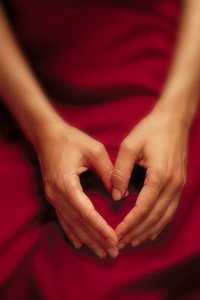 Consciousness
Consciousness is the experience of “Be-ing” which represents everything that is possible for us to experience. All of our senses, perceptions, and possible states of awareness can be divided into seven categories that are associated with each of the seven chakras.
First chakra is survival, vitality and grounding to physical life
Second chakra is emotions, nurturing and shelter
Third chakra is thoughts and power systems
Fourth chakra is love, health and relationships
Fifth chakra is communication and higher creativity
Sixth chakra is inspiration, imagination and spiritual power
Seventh chakra is unity with multidimensional consciousness
The chakras represent not only a particular part of our body, but also a part of our consciousness. Each chakra represents how our unconscious and superconscious selves communicate with our conscious self.
First chakra rules the skeleton, legs, knees and feet
Second chakra rules the genitals, abdomen and lower back
Third chakra rues the liver, gall bladder, stomach, spleen and pancreas
Fourth chakra rules the heart, lungs, immune system, arms and hands
Fifth chakra rules the throat, mouth, speech and hearing
Sixth chakra rules the vision, face, head, sleep and dreams
Seventh chakra rules the brain and nervous system
Tensions that are felt in our consciousness are also felt in our body via the chakra system. Conversely, tensions that are felt in our body are felt in our consciousness.
In other words, if we were having a:
First chakra problem: it would express through our
Consciousness as difficulties with our daily survival, vital energy or dedication to physical life
Body as problems with our skeleton, legs, knees or feet.
Second chakra problem: it would express through our
Consciousness as difficulties with our emotions, ability to give or receive nurturing, or our home.
Body as problems with our reproductive organs, intestines or lower back.
Third chakra problem: it would express through our
Consciousness as difficulties with thinking and power struggles with others or within our self
Body as problems with our liver, gall bladder, stomach, spleen or pancreas
Fourth chakra problem: it would express through our
Consciousness as difficulties giving or expressing love in our relationships and our over-all health
Body as problems with our heart, lungs, immune system, arms or hands
Fifth chakra problem: it would express through our
Consciousness as difficulties with communication and creativity
Body as problems with our throat, mouth, speech or hearing
Sixth chakra problem: it would express through our
Consciousness as difficulties with inspiration, imagination and spiritual power
Body as nightmares or problems with our vision, face, head or sleep
Seventh chakra problem: it would express through our
Consciousness as difficulties with mind expansion
Body as problems with our brain or nervous system
The Physical Body Door in the Conscious Section represents the heart chakra. The life force of the physical body is thought by many cultures to be held in the heart. The heart is also thought of as the center of our ability to love. Indeed, as we move up the chakras to the fourth chakra—the heart chakra—we have moved past the areas of our consciousness that are too often “unconscious” to us and into the areas of our life that are primarily “conscious”. These are the areas of our daily interactions with others and with the world around us.
Our happiness, or lack of it, arises from whether these encounters are filled with fear or filled with love. These encounters begin within ourselves. If our consciousness is filled with fear then many of our encounters with the outside world will be fearful. On the other hand, if our consciousness is filled with love then many of our encounters with the outside world will be loving.
http://www.multidimensions.com/con_body_chakra.html 
 S
S 




 The Hindu Yoga traditions hold various beliefs. Moksha may be achieved by love of Ishwar/God (see bhakti movement), by psycho-physical meditation (Raja Yoga), by discrimination of what is real and unreal through intense contemplation (Jnana Yoga) and through Karma Yoga, the path of selfless action that subverts the ego and enforces understanding of the unity of all. Advaita Vedanta, which heavily influenced Hindu Yoga, believes that Brahman, the ultimate Truth-Consciousness-Bliss, is the infinite, impersonal reality (as contrasted to the Buddhist concept of shunyata) and that through realization of it, all temporal states like deities, the cosmos and samsara itself are revealed to be nothing but manifestations of Brahman.
The Hindu Yoga traditions hold various beliefs. Moksha may be achieved by love of Ishwar/God (see bhakti movement), by psycho-physical meditation (Raja Yoga), by discrimination of what is real and unreal through intense contemplation (Jnana Yoga) and through Karma Yoga, the path of selfless action that subverts the ego and enforces understanding of the unity of all. Advaita Vedanta, which heavily influenced Hindu Yoga, believes that Brahman, the ultimate Truth-Consciousness-Bliss, is the infinite, impersonal reality (as contrasted to the Buddhist concept of shunyata) and that through realization of it, all temporal states like deities, the cosmos and samsara itself are revealed to be nothing but manifestations of Brahman.
 The Fool
The Fool




